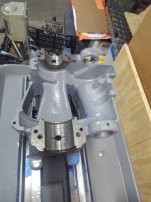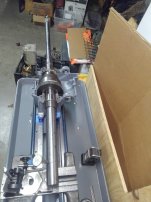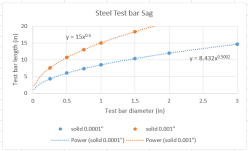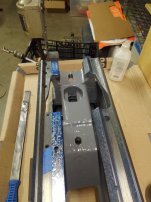Jwearing, that is an excellent idea, I just lifted up on the end of my test bar with a force of about 1/2 its weight and it moved up 0.0003", then I came upstairs and read your post. I think I like your idea better. What is the hole in the center of your bearing cap? Do you have the brass bearings?
Richard, I can certainty cut the tailstock test bar in 1/2, I guess in hindsight I should of bought seperate MT2 and MT3 test bars, then each would come with a center in each end. I could also cut down the headstock arbor. I went back and re-read chapter 15 of the Connelly book, it says test bars should always be hollow to reduce sag but was a little surprised no guidance given on recommended diameters or lengths. I will have to think about this some more. The pdf you provided does make it clear all accuracy measurements are per 12" of test bar length so actual test bar can be any length and measurement is calculated per ft of test bar
From a practical standpoint how do you do scraping on the bottom of a head stock? I guess a hoist is used to lift it off the bed, then it is flipped over onto some kind of blocking at a convenient height for scraping?
Following is some photos showing my 1.73" diameter test bar being measured. The head stock has cast iron bearing surfaces machined into the head casting, when I set the spindle in there it feels very solid, like using V blocks, there is no measurable play. I always add a counter weight to the left side of the spindle that off sets the weight of the test bar so there is roughly equal load on each bearing. The measurements will be repeated after the lathe is reassembled. I am certainty not trying to imply I am doing it the correct or best way, just wanted to make it more clear what I am doing and learn how the pros do it.











